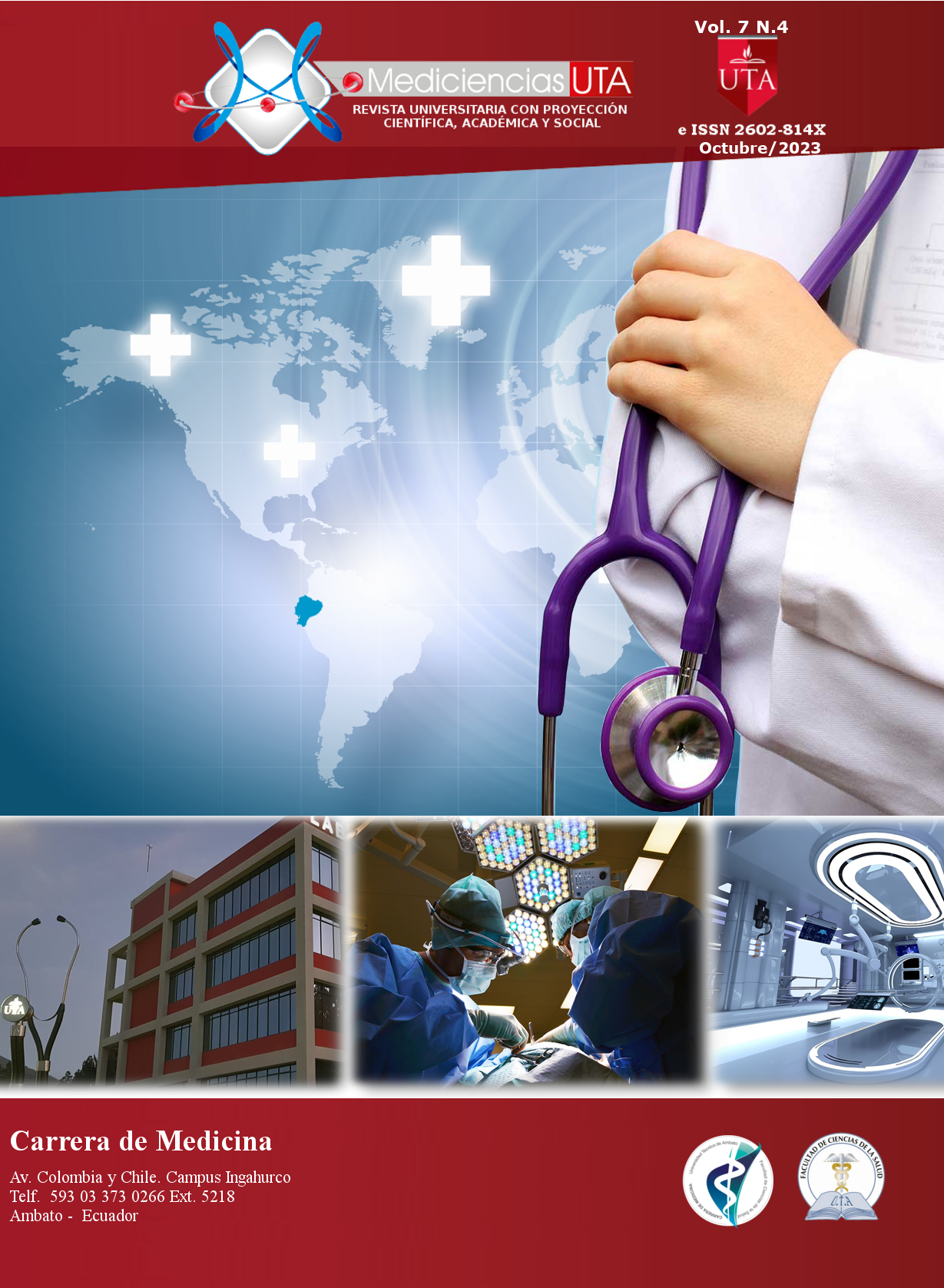Difficult weaning in intensive care. A systematic review
Main Article Content
Abstract
Weaning, or disconnection from mechanical ventilation is a term used in intensive care to remove mechanical ventilatory support in patients with endotracheal intubation, who are extubated after performing a successful 30-minute spontaneous breathing test. There is a group of patients, who do not respond normally to disconnection, so in this research the management of difficult weaning will be described. Objectives: To analyze the modes of invasive mechanical ventilation, non-invasive mechanical ventilation and oxygen therapy, used in difficult weaning. Materials and Methods: A systematic review was carried out according to the PRISMA 2020 guidelines, 26 articles with the best level of evidence available, from databases of great academic and research prestige, such as Google Scholar, Pubmed, Mendeley, IntechOpen, ScienceDirect, consulted in September 2023, were selected. We identified articles published in the last 5 years, with the search title Weaning difficult, under Inclusion and exclusion criteria, from randomized trials, observational studies, clinical cases, review articles. Results: About 22% of cases of intubated patients had difficult weaning, because they did not achieve extubation or release from invasive mechanical ventilation. In this group of patients, an investigation detected that those who were in the T-tube test, needed additional support from the mechanical ventilator. In patients with risk factors for reintubation, one randomized study demonstrated the usefulness of noninvasive mechanical ventilation (NIV) compared with high-flow nasal cannula and as a primary outcome they obtained fewer reintubations in the group of patients with more than 4 risk factors for extubation failure. The high-flow nasal cannula compared to the usual oxygen therapy has also shown no statistical difference. A comparative study of patients with difficult weaning were assigned to SmartCare, which is a ventilatory mode of automatic weaning with negative feedback and observed that SmartCare reduces asynchronies with the mechanical ventilator. Discussion: Invasive mechanical ventilation modes such as assisted spontaneous breathing with support pressure, ventilation with neural adjustment and SmartCare, implement assisted spontaneous breathing with support pressure and automatic weaning, effectively, decreasing the time of mechanical ventilation and asynchronies, improving the success of extubation, in patients with difficult weaning. Spontaneous breathing assisted with supportive pressure is useful in patients with risk factors, being the best option, for a progressive weaning. Non-invasive mechanical ventilation is superior compared to the high-flow nasal cannula in difficult weaning. In Ecuador, no updated data were found that address the difficult weaning issue, which is why the present research was developed. Conclusion: In patients with difficult weaning, additional therapies are required for their disconnection, whose process continues until extubation, which can be supported with NIV, oxygen therapy and invasive mechanical ventilation modes such as ASB/PS, NAVA, SmartCare, which implement: assisted spontaneous breathing with support pressure, automatic weaning and neuronal adjustment, decreasing mechanical ventilation time, asynchronies and contribute to successful extubation
Downloads
Article Details

This work is licensed under a Creative Commons Attribution-NonCommercial-ShareAlike 4.0 International License.



